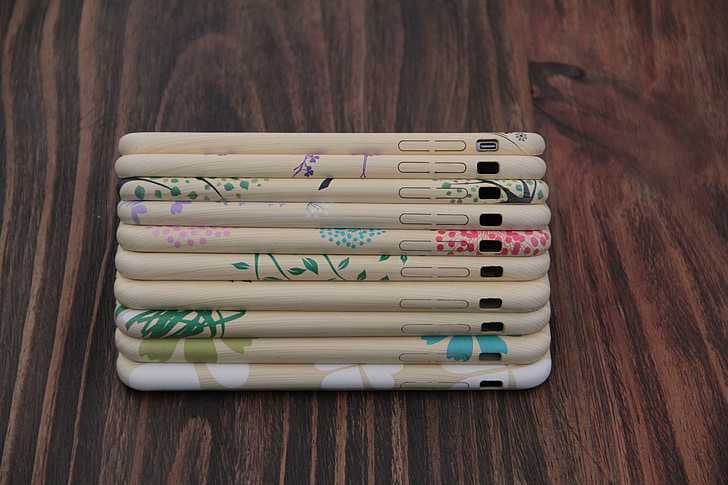Are you fascinated by the world of photography and the possibilities it holds? Do you find yourself wondering about the magic behind those close-up shots that capture tiny details in stunning clarity? Look no further, for we are about to embark on a journey to unravel the secrets of the macro lens. In this article, we will answer some of the most burning questions that photographers and enthusiasts have regarding macro lenses. From understanding the purpose and applications of a macro lens to exploring the differences between 1:1 and 1:2 macro lenses, we will leave no stone unturned. Ever wondered if you can use a 70-200 lens as a macro lens? We have the answer. Curious about the emerging trend of macro lenses for iPhones? We'll shed light on that too. And let's not forget the distinction between a 50mm lens and a 50mm macro lens – this is a comparison you don't want to miss. So, get ready to dive into the fascinating world of macro lenses and discover all the wonders they can bring to your photography endeavors.
What is a macro lens used for?
A macro lens is a specialized type of lens used in photography to capture highly detailed close-up shots of small subjects. Its primary purpose is to magnify the subject to life-size or larger on the camera's image sensor. This allows for capturing intricate details that are usually invisible to the naked eye. Macro lenses are widely used in various fields such as nature photography, product photography, scientific research, and even in capturing artistic and abstract images. They enable photographers to capture breathtaking images of flowers, insects, textures, and intricate objects with stunning clarity and sharpness. Whether you want to showcase the delicate architecture of a butterfly's wings or the intricate details of a piece of jewelry, a macro lens is your go-to tool for capturing the beauty of the tiniest worlds around us.
What is the difference between 1:1 and 1:2 macro lenses?
The difference between 1:1 and 1:2 macro lenses lies in their magnification capabilities. A 1:1 macro lens is capable of reproducing a subject at life-size on the camera's image sensor. In other words, if you are photographing a tiny object, it will appear as the same size on the sensor as it does in reality. On the other hand, a 1:2 macro lens can only reproduce a subject at half life-size on the sensor. This means that the subject will appear half the size on the sensor compared to its actual size. In practical terms, a 1:1 macro lens allows for capturing greater levels of detail and achieving higher magnification for smaller subjects. However, a 1:2 macro lens can still provide excellent results for many macro photography scenarios, especially if the subject is not extremely small or intricate.
Can I use 70-200 as a macro lens?
While a 70-200mm lens is primarily known as a telephoto zoom lens, it can be used to capture macro-like shots to a certain extent. However, it is important to note that a true macro lens typically provides significantly higher magnification and image quality for close-up photography. The 70-200mm lens may not have the minimum focusing distance and magnification capabilities required to achieve true macro results. That being said, it is still possible to capture detailed close-up images using a 70-200mm lens by employing techniques like zooming in, using extension tubes, or attaching close-up filters. These methods can offer a pseudo-macro effect by allowing you to get closer to the subject and achieve a greater level of magnification. However, for optimal results in macro photography, investing in a dedicated macro lens is recommended.
What is a macro lens for iPhone?
A macro lens for iPhone is an external lens attachment specifically designed to enhance the close-up photography capabilities of an iPhone's built-in camera. These lenses usually come in the form of small clip-on attachments that can be easily mounted over the iPhone's camera lens. A macro lens for iPhone allows users to capture detailed close-up shots of small subjects with their iPhones, expanding the creative possibilities of smartphone photography. These lenses offer magnification capabilities similar to dedicated macro lenses for traditional cameras, allowing users to capture intricate details such as flower petals, insects, or textures. With the increasing popularity of smartphone photography, macro lenses for iPhones have become a popular accessory among photography enthusiasts and professionals who seek to explore the world of macro photography using their smartphones.
What is the difference between a 50mm lens and a 50mm macro lens?
The main difference between a 50mm lens and a 50mm macro lens lies in their primary purpose and magnification capabilities. A 50mm lens, often known as a standard or prime lens, is typically used for general-purpose photography, including portraits, street photography, and everyday shooting. It offers a versatile focal length that closely resembles the field of view of the human eye, resulting in natural-looking images. On the other hand, a 50mm macro lens is specifically designed for close-up photography and excels at capturing intricate details. It has the ability to reproduce subjects at life-size (1:1) on the camera's image sensor, allowing for stunning macro shots with exceptional clarity and sharpness. While a 50mm lens can still capture close-up images, a dedicated 50mm macro lens provides superior magnification and is specifically optimized for macro photography. So, if your goal is to delve into the world of detailed close-ups, a 50mm macro lens would be the ideal choice.
Further Inquiries about macro lens
1. What are some popular brands that offer high-quality macro lenses?
When it comes to macro lenses, there are several reputable brands known for their high-quality offerings. Canon, Nikon, Sony, Tamron, and Sigma are among the top brands that produce exceptional macro lenses. Canon's EF 100mm f/2.8L, Nikon's AF-S DX Micro-Nikkor 85mm f/3.5G, and Sony's FE 90mm f/2.8 Macro G OSS are highly regarded options for macro photography. Tamron's SP 90mm f/2.8 Di Macro VC USD and Sigma's 105mm f/2.8 EX DG OS HSM Macro are also popular choices. These brands offer various focal lengths, aperture options, and image stabilization features, catering to different preferences and shooting styles. It is essential to research and compare specific lens models based on factors like optical quality, build, and compatibility with your camera system to find the ideal macro lens that suits your needs.
2. What techniques can I use to achieve sharp and detailed macro shots with a macro lens?
To capture sharp and detailed macro shots with a macro lens, there are a few techniques you can employ. Firstly, it is crucial to stabilize your camera to avoid any unwanted camera shake. Using a tripod or a stable surface, along with a remote shutter release or a timer, can greatly enhance the sharpness of your images. Additionally, using a small aperture, such as f/11 or f/16, can increase the depth of field and ensure more of your subject is in focus. Pay attention to the lighting conditions as well. Natural diffused light, like shooting outdoors on an overcast day or using a softbox or reflector indoors, can help soften harsh shadows and bring out more detail. Finally, take your time when focusing. Utilize manual focus or autofocus with single-point selection to precisely focus on the desired area of the subject. Experimentation and practice are key to mastering the art of capturing sharp and detailed macro shots.
3. Can I use extension tubes or close-up filters with a macro lens?
Yes, you can use extension tubes or close-up filters with a macro lens to further enhance its magnification capabilities or achieve even closer focus. Extension tubes are hollow rings that mount between the camera body and the lens, effectively increasing the distance between the lens and the image sensor. This extension allows for closer focusing and higher magnification, enabling you to capture more intimate details. Close-up filters, on the other hand, are additional lenses that screw onto the front of the macro lens, acting as a magnifying glass. They come in different diopter strengths, with higher diopters offering greater magnification. By using extension tubes or close-up filters in conjunction with a macro lens, you can push the limits of your macro photography and capture subjects with even more detail and magnification. It is important to note that the image quality may be slightly compromised with the use of these accessories, so it's advisable to choose high-quality extension tubes or close-up filters for the best results.

In conclusion, the macro lens is an essential tool for photographers seeking to capture the intricate details of small subjects. Whether you are a nature enthusiast, a product photographer, or simply someone who appreciates the beauty of the micro world, a macro lens opens up a realm of possibilities. It allows you to see and capture things that are often unnoticed by the naked eye, revealing the hidden intricacies of the world around us. Understanding the differences between magnification ratios and the nuances of specific macro lenses can help you choose the right tool for your desired outcomes. Additionally, while dedicated macro lenses provide optimal results, there are techniques and accessories that can enhance your macro photography with other lenses. So, grab your camera, attach a macro lens, and embark on an enchanting journey of discovering the unseen wonders that await through the lens of macro photography.



